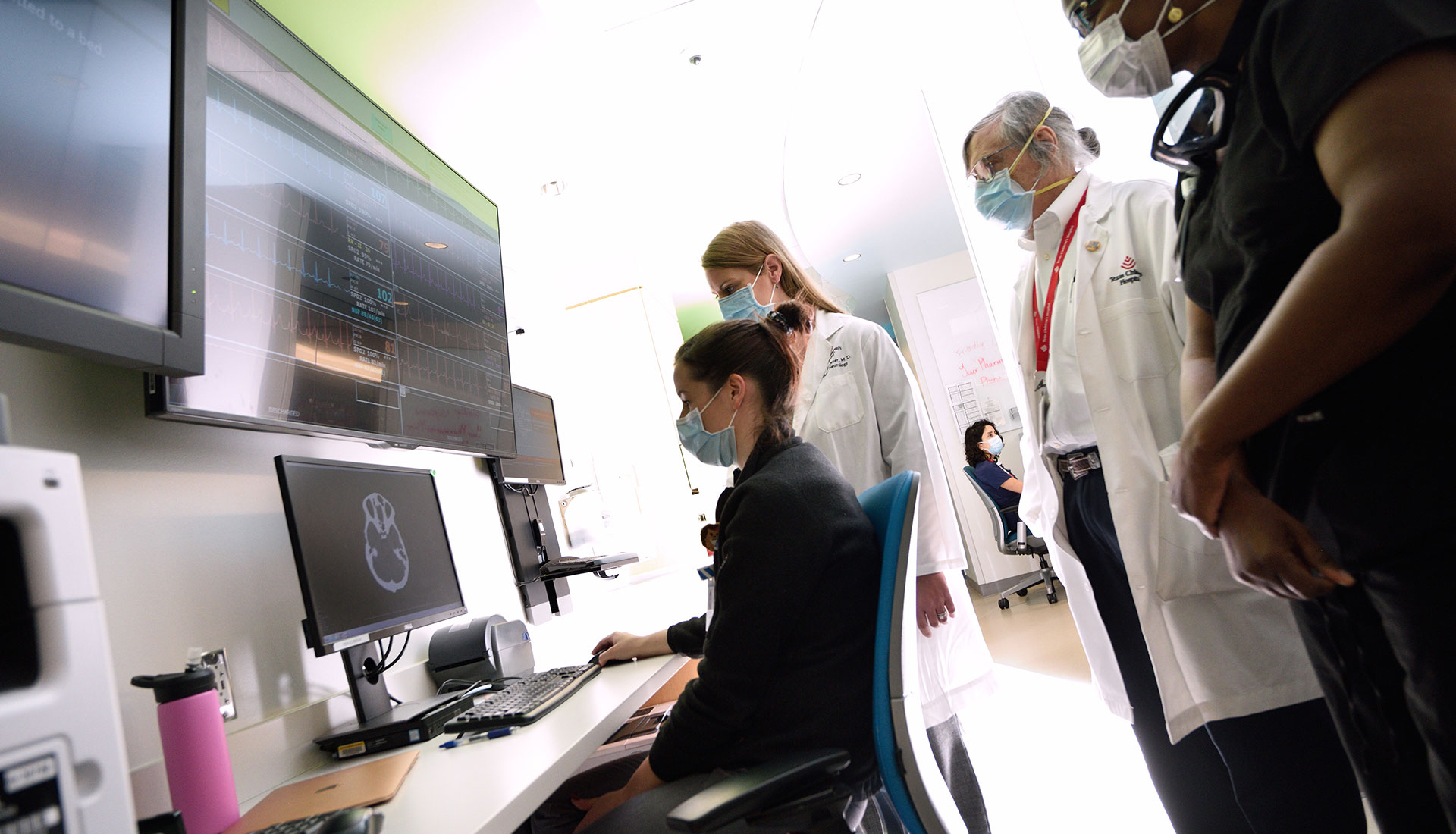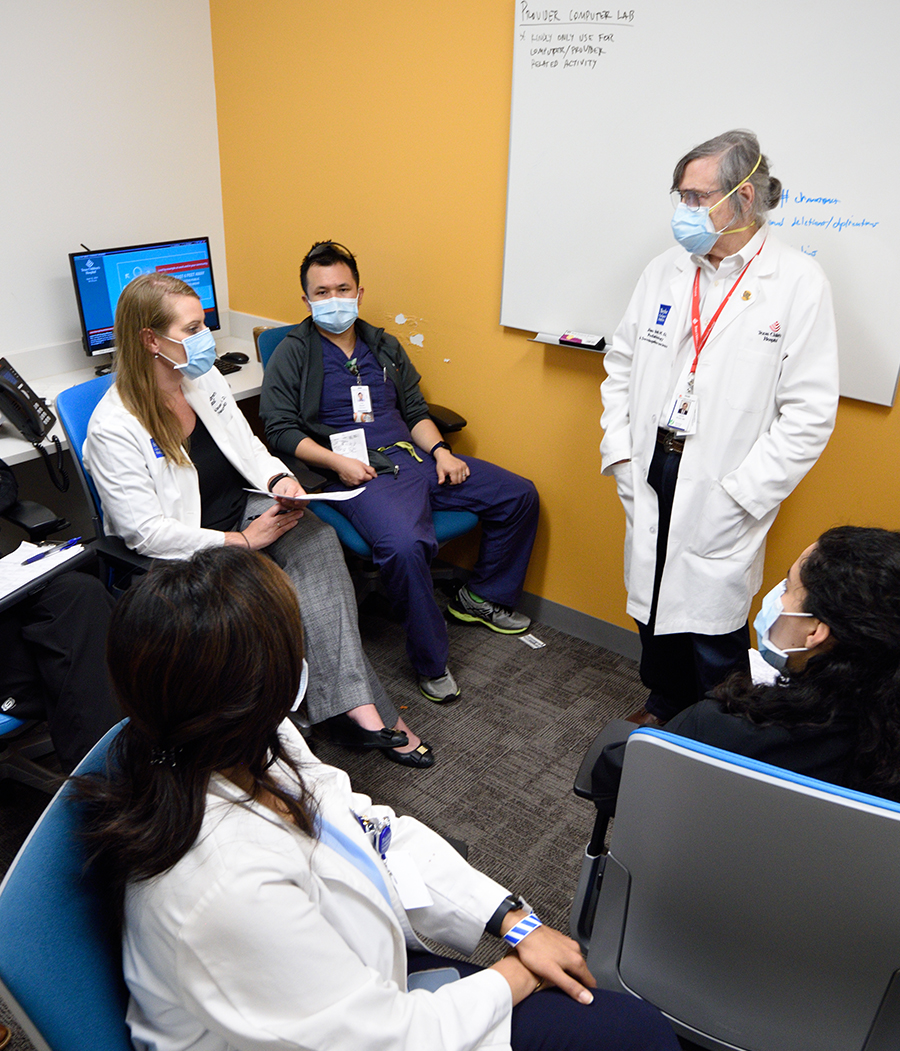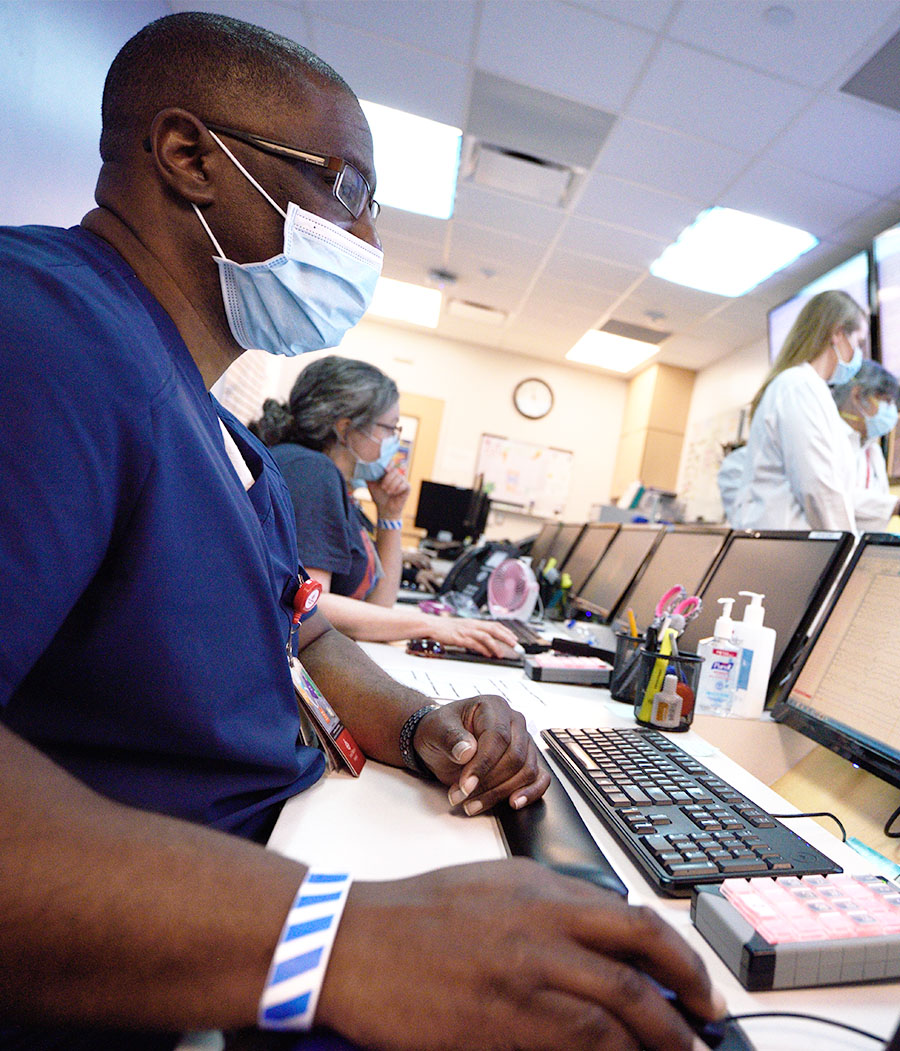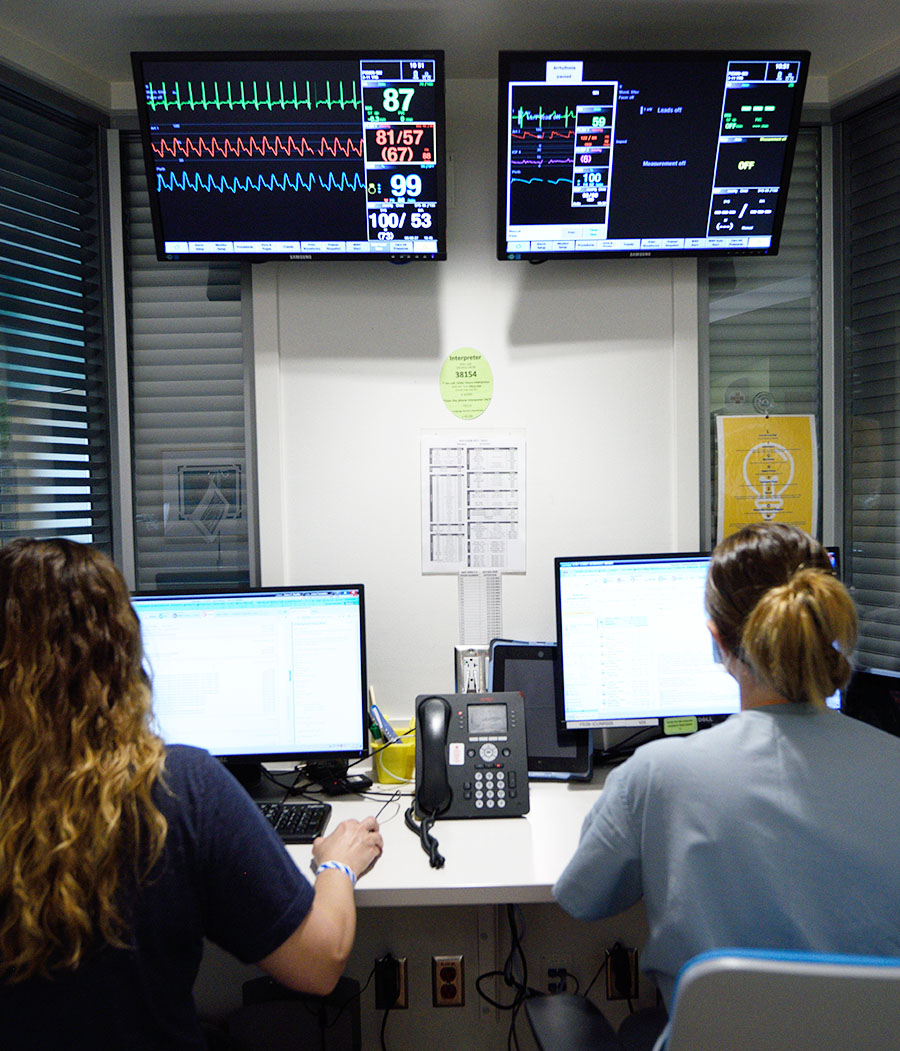

Call it mother’s intuition. Morgan Caraway knew something was wrong with Addison, her 5-week-old prematurely born daughter. Even though an urgent care doctor said she was fine, Mrs. Caraway drove Addison to Texas Children’s Emergency Center when her temperature reached 101 degrees. Tests revealed she had bacterial meningitis, an inflammation of the fluid and membranes around the brain and spinal cord.
“The staff was wonderful,” said Mrs. Caraway, who also was treated at Texas Children’s for meningitis when she was a baby. “They were super swift. They put her in a crib and moved us up to the Neuro ICU. Immediately, tons of doctors and nurses came in.”
Early antimicrobial therapy is the most important treatment for meningitis, according to Jennifer Erklauer, MD, medical director of Texas Children’s Neurocritical Care and Pediatric Neuro-Intensive Care Unit, and assistant professor of pediatrics-neurology and critical care at Baylor College of Medicine.
Therapy supports the patient through the illness while antibiotics treat the infection. Support for the patient may include:
Medical staff members in the 12-bed Pediatric Neuro-Intensive Care Unit have both interest in and special training in the brain and critical care. Specialists in other fields, such as infectious disease and rehabilitation, join the team as needed.
Although common for adults, comprehensive neurocritical care units for children are rare. It is one of the services that contributed to U.S. News & World Report ranking Texas Children’s Neurology & Neurosurgery No. 2 in the country among children’s hospitals for 2020-21.
At Texas Children’s, a dedicated neurology team began following patients in the Pediatric ICU (PICU) in 2009 under the leadership of James J. Riviello, MD, now associate section head for Epilepsy, Neurophysiology and Neurocritical Care, and professor of pediatrics and neurology at Baylor College of Medicine. The opening of the hospital’s new Lester and Sue Smith Legacy Tower in 2018 made establishment of the dedicated unit possible.
In the morning, multidisciplinary rounds are held with neurologists, neurosurgeons and critical care specialists.
“We are all together at the bedside with the parents so we can make plans for the day together,” Dr. Erklauer said.
Although this is the core unit where they try to admit the majority of neurocritical patients, the team also provides neurocritical care to other children in the PICU and in other intensive care units as well. For instance, patients with congenital heart disease who develop seizures or strokes stay in the Cardiac ICU, but the same neurocritical care consult team sees them.
“We have portable EEG machines, so no matter where you are in an ICU, we can still monitor EEGs the same way that we do in Neuro ICU. We do a lot with patients who have acute heart or pulmonary problems. It’s known that a significant number of those patients can have brain problems,” Dr. Riviello said.
After a couple of days, Addison seemed to be progressing and was moved to a regular room. But a suspected seizure sent her back quickly to the Neurocritical Care Unit, where her EEG was monitored for the next three days.
“What’s exceptional about our center is that we have people watching the EEGs 24/7,” Dr. Riviello said. “We’re looking for acute changes in the EEG that indicate the potential for a neurologic deterioration and intervening before the insult becomes irreversible. For instance, it could be that seizures start mildly, then build up and become longer, and then go into one long seizure that we call status epilepticus. What we’re trying to do with all our interventions is prevent brain tissue from dying.”
To accomplish constant monitoring, Texas Children’s has one of the largest pediatric neurophysiology programs in the world, with 54 EEG technologists who review the results in association with 20 neurologists specializing in epilepsy.
“We’ve changed the mindset that says an individual doctor would decide, ‘Yes, this patient needs an EEG,’ or ‘No, they don’t.’ Now we believe that if you have a certain disease, that disease needs monitoring, and it shouldn’t be up to the individual doctor to decide. We want to have a system in place that, for the most part, is not dependent on a given individual,” Dr. Riviello said.
Besides visual inspection of the EEGs, the team uses computerized techniques, called digital trending or quantified EEG, to identify trends in the EEGs indicating potential problems. Additional monitoring includes:



Texas Children’s uses the Moberg neuromonitoring device to integrate all the information from the different modalities into one system and one time-stamped screen.
“Those are the types of things that set our unit apart, in addition to the education and experience of the providers and nursing staff,” Dr. Erklauer said. “The team is very aware of potential complications, such as abscess formation in the brain or spinal cord, which may require urgent surgical intervention. Close monitoring of the neuro exam occurs throughout the ICU stay to monitor for acute changes, which may indicate that there is a new complication.”
When the unit first opened, the Neurocritical Care Team offered emergency neurologic life support certification to all the physicians, nurse practitioners, physician assistants, residents and fellows. The team continues to build expertise among providers through workshops and a lecture series. They are working with Nursing to create training modules that nurses can use as time permits.
“When people at the bedside have expertise in caring for patients with neurologic injury, they’re able to anticipate and identify problems, understand the goals of care, and intervene early to try to minimize secondary brain injury and optimize outcome. We’re having a positive impact on patient outcomes by putting all this expertise together and by building our program. Ultimately, our goal is for children to return home with their families with good neurologic outcome and an excellent quality of life,” Dr. Erklauer said.
For Addison Caraway at 6 months old, the program has been a success.
“She was so, so sick,” her mother, Mrs. Caraway, said. “She could have died very easily. You’d never know now, though. She’s meeting all of her milestones and wasn’t left with any hearing deficits. I definitely credit Texas Children’s. The care we received was just incomparable.”